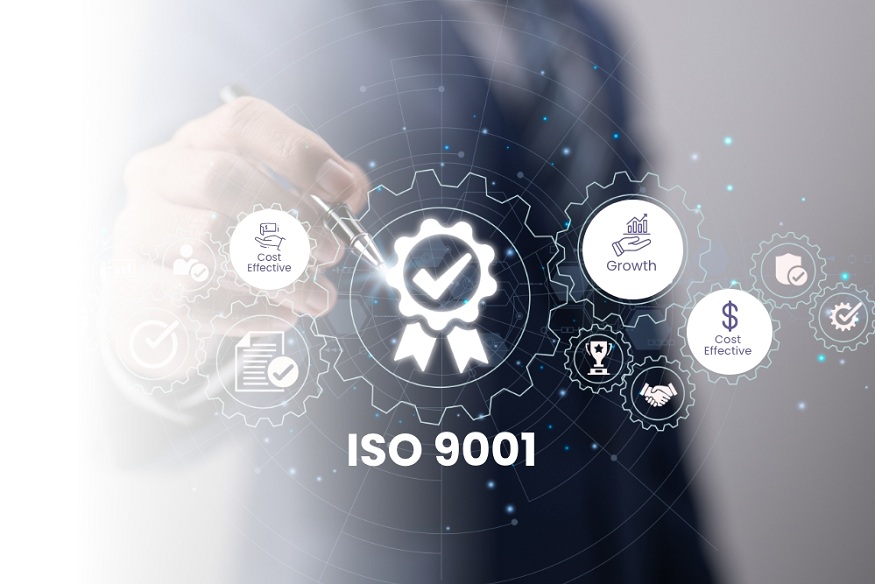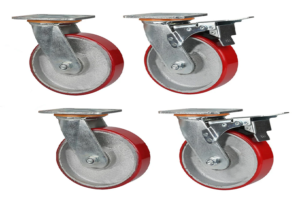ISO 9001 is accepted worldwide as a standard for adopting a Quality Management System (QMS) that keeps products and services uniformly high. This blog walks through how to follow, use and uphold ISO 9001 standards. This approach focuses on efficient operations, meeting customer expectations and improving quality with actions and rules for compliance.
1. Understanding the foundations of ISO 9001
ISO 9001 defines what a Quality Management System (QMS) should include, using a process approach and considering risks. Organizations are required to outline the environment they operate in, determine who their stakeholders are and set the boundaries of their QMS. Effective leadership is key, since senior managers need to set high standards and ensure all resources are provided. Records, policies and procedures are essential for ensuring consistency and traceability.
When organizations map their main business processes, they can see how each step relies on others, allowing them to control and monitor performance. Building a culture around customer service, proof-based choices and continued learning strengthens the structure set by ISO 9001. A thorough understanding of these basics supports companies in avoiding nonconformities and staying strong for the long term.
2. Core principles of a quality management system
The seven quality management principles embedded in ISO 9001 Quality Management System are: customer focus, leadership, engagement of people, process approach, improvement, evidence based decision making and relationship management. The identification of requirements and satisfaction measurement is driven by customer focus. Leadership provides a unified direction and cultivates a culture in which quality is everybody’s job.
Competent, empowered personnel help spread awareness of risks and problems. The process approach is aimed at efficiency enhancement through systematic planning, execution and monitoring of the activities. This continual improvement requires ongoing assessment and modification of performance in response to changing needs.
Decisions are backed by data and analysis to strengthen them and validate effectiveness. Lastly, maintaining relationships with suppliers and partners help ensure stability in the supply chain. These principles, when combined, ensure that quality management goes beyond simple compliance to become one of the central aspects of the organization’s strategy.
3. Implementing the ISO 9001 framework
Successful implementation of the ISO 9001 involves gap analysis as an initial step, comparing existing processes with the ISO 9001 requirements. This diagnostic step pinpoints areas for corrective action and resource allocation. Next, organizations establish a quality policy and measurable objectives tied to strategic goals. Workflows are documented by process owners, defining inputs, outputs, controls and responsibilities. Staff are trained and evaluated on competence to execute new procedures.
An internal audit program ensures compliance and effectiveness, identifying flaws before an external audit. Leadership is kept informed and responsive through management reviews that summarize audit results, performance metrics and improvement opportunities. Proactive mitigation is supported by risk management activities such as context evaluation and SWOT analysis.
During implementation, engagement is maintained through clear communication channels and change management practices reduce resistance. By following this structured approach, organizations not only embed quality practices in their everyday operations but also prepare for certification.
4. Achieving ISO 9001 Certification
For organizations to achieve ISO 9001 Certification, they must choose an accredited registrar and make a complete application. The procedure is generally done in two phases: documentation review and on site audit.
In Stage 1, the auditor checks the quality manual, written procedures and other records to verify compliance with requirements. Stage 2 consists of implementation evaluation through interviews, observations and sampling of records. Corrective actions and evidence of resolution are required for nonconformities, if any. After compliance verification, the registrar issues the certificate which is valid for three years with annual surveillance audits.
ISO 9001 Certification proves that the organization is committed towards quality and improves the market credibility. In addition, it enhances customer trust and could even be a gateway for participation in regulated industries where certification is a must.
5. Maintaining compliance and continual improvement
Maintaining a QMS requires ongoing focus on performance metrics, customer feedback and process reviews. Surveillance audits assure that policy, objectives and procedures are still effective and in line with current standards and operational goals. Root-cause analysis and corrective action are taken to prevent recurrence, reinforcing a culture of accountability and learning driven by nonconformities.
Organizations should keep tabs on key performance indicators such as defect rates, on time delivery, rework levels and customer satisfaction scores, to determine success and pinpoint areas for improvement. At planned intervals, management reviews evaluate audit outcomes, resource needs, strategic objectives and emerging risks. Involving employees in improvement initiatives (suggestion schemes, quality circles, cross functional teams) promotes innovation, engagement and a sense of ownership.
Training updates are provided on a regular basis so personnel stay current on their skills and are aware of any procedural or regulatory changes. Incorporating lessons learned into process improvements helps to foster a learning culture. Treating the QMS as a living system rather than a static requirement enables organizations to continuously adapt to market shifts, regulatory changes and customer expectations, improving long term competitiveness and resilience.
6. Common challenges and best practices
Inadequate leadership engagement, insufficient documentation and resistance to change are some of the organization’s challenges. The first step in overcoming these hurdles is clear communication from top management stressing the strategic value of quality. Simplifying documentation, concentrating on critical processes, prevents bureaucracy and promotes usability.
Training and getting employees involved in internal audits empowers them, thereby decreasing resistance. Employees at all levels must understand how their roles affect overall quality objectives. It creates a culture of continuous improvement, as the sense of ownership encourages people to take ownership and make small improvements.
The use of technology, like document management and process monitoring tools, helps simplify record keeping and analysis, as well as increases transparency and traceability. Comparison against industry peers and participation in professional networks provides insight into best practices and evolving standards. Leaders should promote successes, failures as learning opportunities and promote a positive mindset. Once the initial momentum has been created, it can be sustained with the establishment of a dedicated quality team or officer. ISO 9001 goals are achieved through regular reviews and feedback loops. With the help of ISO 9001 practices, organizations can anticipate obstacles and sail through the ISO 9001 journey with best practices to maintain success in the long run.
Conclusion
ISO 9001 gives a well-structured approach for organizations to manage their quality. By following certifications, carrying them out correctly and always seeking to improve, businesses enhance their operations and earn customer trust. Through this guide, businesses can connect their quality goals with overall company strategy and uphold worldwide recognized standards.



